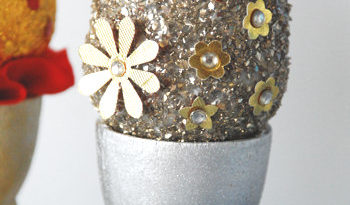Growing A Herb Garden
Did you ever notice how the best recipes call for fresh herbs? Rather than using the dried up equivalents found in the spice aisle of a grocery store, many gourmet recipes want the fresh flavor of homegrown herbs. These herbs have a delightful and zesty flavor that adds a lot to the value of a dish. Where do the serious gourmets turn for their herbs when an ordinary grocery store only carry spices for the mediocre taste bud? Many cooks grow their own herbs in an indoor garden. In pursuit of that right flavor and aroma in a dish, many cooks are willing to put forth the extra time and effort to have completely fresh herbs on-hand.
If herbs have a delicate flavor, does that mean the plant is also delicate? Don’t let their delicate flavor mislead you into thinking the herb plant is also delicate. In fact, many herbs grow so hardy that they are labeled ~invasive~. In garden language, that means herb plants will totally dominate and take over an area. To save your garden from this invasiveness, it’s much simpler to grow herbs indoors in a dedicated location. Begin your garden by picking out a variety of small to medium flowerpots with drainage holes. Your selection looks best if the pots match your decor. The herbs that you select should interest you and maybe even look good in your room’s surroundings. When you scoop in potting soil, be sure to prepare the soil according to the bag’s planting directions.
Decide which herbs are your favorites that you would like to try growing. Any of these herbs make a good choice for starting your herb growing adventure: basil, thyme, sage, chives and rosemary. Purchase a packet of seeds or starter plants from your local greenhouse or nursery. If it is winter and your local garden centers are closed, you can buy seed packets online any time of year. Plant herb seeds according to the package directions, being careful not to plant the tiny seeds too deep.
While people think the window sill is a great place to put plants so they can get sun, by the window will be too cold for your seedlings, especially if you live in a cold climate. Position the flower pots so that the plants will get sun for about six to eight hours per day. Water your herbs when the top of the soil in the pot feels dry. If you are afraid of watering plants, there is a thermometer-like device that lists plant names available from garden centers. You simply place this thermometer in the soil and it tells you whether your type of plant needs water. Be sure to have a plastic drip pan for flower pots to catch the water that drains through the drain holes.
Don’t think you can grow herbs on your own? Just remember that almost everyone can grow a Chia pet. As an herb grows, you simply snip off the fresh herb with a kitchen scissors and dice up for your favorite gourmet dish. You’ll find these gourmet dishes made from scratch will turn out much tastier when you infuse them with your homegrown herbs.
Copyright 2005 Riccardo Calder. All rights reserved.
Riccardo Calder is the owner and operator of You And Herbs a major website for information on herbs. For further details and questions visit his archive of articles: http://www.yaherbs.com/
| Related Articles:
Designing a Lovely Garden with Plant Stands Creating a Japanese Garden and Landscape |

